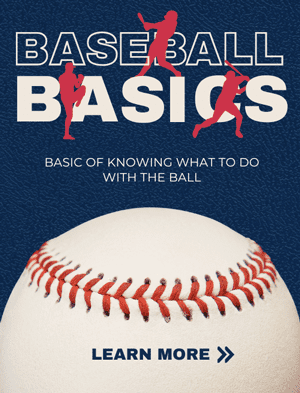Besides the apparent benefits to one’s physicality, pitching in baseball, when mastered, can be pretty fun and satisfying. However, becoming a pitcher is not easy. Making preparations and learning necessary tips top the bill in securing a high pitching rank in baseball.
If you read this article to the end, you will learn effective tips on how to be a pitcher in baseball. In this respect, this article also explores the necessary traits for a pitcher’s body and attitude. Other essential points are valuable tools in boosting your chances of being appointed as a pitcher.
So enjoy!
What You Will Need
The pitching position remains a distinct position in baseball. At times, as players tend to point out, pitching can be more difficult than batting.
And while it may share some resemblance with other positions in baseball like the fielding positions, it stands out in other ways. For instance, it is the only position in baseball that is present in every game.
Becoming a pitcher in baseball requires some preparation. Here are what you will need:
1. Early League Exposure
If you aim to become a pitcher in baseball, you will have to start early. When you do things as early as possible, you get to condition your skills through exposure. Also, joining a league when you are younger should provide good insight into your pitching skills.
Even smaller areas in the country hold recreational baseball for young players to prepare them for a professional league career. If you or your kid encounters the opportunity to join a league today, make sure to seize that opportunity.
Note that as you get older, the chance of you having excellent pitching skills decreases. So, start today.
2. A Solid Team or Support Circle
If there’s one person who can quickly evaluate your pitching performance, that would be the catcher.
The catcher serves as the pitcher’s partner for the long run.
Finding an excellent catcher to stick with you (parents, another team member, friend or buddy, partner, teacher, coach, etc.) should support the developmental years of your pitching and encourage you to pursue such a career/position.
Moreover, you don’t stop at finding a partner; you will have to invest in a team. If a partner catcher supports you, a team builds your skills, strategies, and dispositions as a soon-to-be pitcher.
A solid team or support circle, by all means, is crucial to a successful pitching career. The saying “no man is an island” could not be more accurate in sports like baseball.
So, pick the best team and the right pitching instructions if you are serious about becoming a (good) pitcher in baseball.
3. Prepare the Important Tools and Gear for Pitching
Here is a comprehensive list of the essential tools and gear for pitching:
- Pitching/Baseball Glove
If you or your kid is starting young, do not go immediately with an expensive glove. Instead, go for a cheaper one because the cheaper it is, the softer.
If you begin with a super-expensive MLB glove, you might end up disappointed. Expensive leather gloves are hard, so they need to be broken in. So, if you are just starting, go for the softer gloves with the right fit.
As you grow into your role and master its techniques, start investing in professional baseball/pitching gloves designed mainly for pitching controls.
- Radar Gun
It would not be easy to learn to pitch baseball or improve pitching without a tool that helps you keep track of your throwing speed. Speed or velocity tracking also determines your pitching strength. Thus, using a radar gun is like hitting two birds with one stone.
Make sure only to use an accurate radar gun. Speed and distance readings should guide you in spotting areas in your throwing performance that need improvement.
- Throwing Ball
When buying or choosing a baseball/throwing ball, consider its softness/hardness and the size of its seams. Also, pick the appropriate ball based on your team’s stipulations, league, age, and level.
In MLB, regardless of which ball you choose, you are still bound to the ball’s CCOR and COR stipulations. The issue of baseball material demands attention to the point that some leagues even discourage certain baseball types and materials.
Learn more the most popular tricks on throwing the ball:
– Throw a Slider in Baseball: A Comprehensive Guide
– Step by Step to Throw a Curveball in Baseball
– How to Throw a Change Up in Baseball
- Elastic Training Bands
Pitchers require massive power on their calves, thighs, arms/forearms, and shoulders. Therefore, developing a fit physique for pitching is crucial to a pitcher’s performance.
Physical pitching training using elastic training bands helps tone and prepare the body parts to fulfill the transfer of momentum from the pitcher to the ball during a pitch.
When working out, make sure to prioritize your shoulder; it is this area that pitching uses the most. Also, a conditioned shoulder allows you a fast recovery time right after throwing.
- Pitching Net for Training
Honing your pitching skills is crucial to becoming a professional pitcher. Training at least 2-3 hours per day is required for any starting pitcher (1-2 hours for kids) preparing for an upcoming game.
But you certainly cannot expect to always train with your team. To address this, you will need a pitching net. With the net, you can do throws all by yourself in the comfort of your backyard.
Since most nets are designed with a strike zone attachment, you will not have to hassle your partner in constantly retrieving the balls you throw.
Just make sure to pick a durable and accurately designed net for a productive training experience.
Step by Step Instructions (or Tips)
Here the tips on how to become a pitcher in baseball:
Tip #1. Develop Your Accuracy.
Whether practicing with a pitching net or with a partner (catcher), always mind your focus. No matter how strong you throw, if you lack the accuracy, you will not build a career in pitching.
When throwing, focus on an area (the strike zone). Throw the ball into that and see if it hits accurately. Now, shift to another zone. Try hitting that area and see if you can easily throw between various zones or spots.
Tip #2. Master the game.
Immerse into the game by knowing its basics and observing how other players/hitters/pitchers approach the ball. Also, look into the relationship between each member in a team.
Lastly, do not surrender after a loss. Mastery is achieved through perseverance. And perseverance and patience are two common virtues required in baseball.
Tip #3. Do not overwhelm yourself with a lot of pitching techniques.
A pitching technique will eventually become your signature. Thus, adapting one technique for an extended period is necessary for finding your right pitching combinations. But you can only do this if you know all the techniques you can choose from.
Sure, there are a lot of variations to choose from. Changeups, curved balls, etc., are just a few of the means that could help you control the ball’s movement. When learning techniques, master one at a time; don’t overwhelm yourself with too many skills too quickly.
The rest of the pitching techniques baseball should follow.
Tip #4. Have the right mindset regarding pitching.
If you think that pitching concerns only your upper body, you’d better rethink that. Pitching is about momentum. And momentum is about the power being distributed by all body parts, especially by the lower part of the body.
To achieve this, tone your body using resistance. Second, make sure to practice some cardio exercises. Finally, keep a check on your diet and overall lifestyle. Finally, the means to learn how to pitch baseball lies in one’s commitment to learning.
Conclusion
As you read in this article, the tips and preparations on how to be a pitcher in baseball all have one commonality: lifestyle orientation. One does not become a pitcher overnight. And so, complete immersion into the position starting from a young age determines success.
Yet, it does not stop there. To gain a successful pitching career, necessary preparations, training, high-pitching gear, a solid support circle, etc., are to be secured.
What do you think of our tips? Comment down below to share your thoughts.

A powerful swing and the ball is flying across the field, just one hit, and we might never forget the thrill it brings. I do not know about you, but I never do. Every baseball game is the chance to compete with others and cooperate with your teammate. It is among my biggest passions.
















